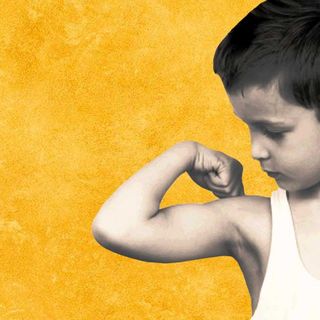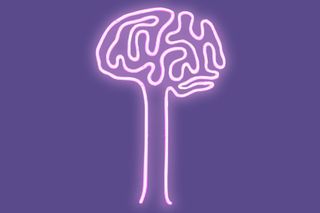
Research into Kids’ Brains Opens Possibility for Similarly Rapid Brain Development in Adults
A baby’s ability to learn language and new skills is astonishing. At no other point in life does the same degree of learning and growth occur in the brain in the same amount of time. Child development experts call...

A baby’s ability to learn language and new skills is astonishing. At no other point in life does the same degree of learning and growth occur in the brain in the same amount of time. Child development experts call these first 1000 days a critical window for development, a foundational period that can affect the entire course of a life.
Yet, we’re only just beginning to understand the depth of opportunity this critical period gives us. One of the people leading this research is Elissa Newport, a professor of neurology at Georgetown University. Newport leads the Learning and Development Lab, where she explores how plastic babies’ brains are. Plasticity is the term for the brain’s unique ability to change in structure, to grow and adapt, to create new neurons and connections between them. Baby brains have long been thought to be the most plastic of all, allowing them to grow so rapidly in cognitive and motor skill in such a short period of time – even when injured.
Newport compares brain scans of adults who suffered strokes in the left side of their brains, where language is controlled, during infancy (birth is the second most-common point in life to have a stroke) with scans of people who suffered similar strokes in adulthood. In both groups, the effects are the same – large swathes of brain death from lack of oxygen. It’s in what happens afterwards that differences emerge.
In the group whose strokes occurred in infancy, language control simply shifted to the opposite side of the brain. Areas not usually associated with language picked up the slack.
“If you talk to them, you’d never know anything was wrong with them,” Newport said, presenting her findings last week in Austin, Texas, at the annual meeting of the American Association for the Advancement of Science, on a panel alongside Marina Bedny and Takao Hensch. “Their language acquisition is very, very good.”
People who suffer the same kind of stroke in adulthood, however, experience large-scale language loss, she said. While right hemisphere brain regions activate in the wake of left hemisphere loss in adults, they don’t really work; they don’t take over language functions in the same way. The window appears to have closed.
Nurture bests nature
The brain is a multispecialized organ, the most complex in our body, responsible for human existence, experience and identity. While scientists understand its big picture functions, thanks to technological advances in imaging that allow us to observe what parts of the brain are active during which tasks, the way all of the 86 billion neurons work together in rapid-fire precision is still a mystery. Research like Newport’s, which explores what happens when things go wrong in early development, are helping us understand.
Bedny, a professor of psychological and brain sciences at Johns Hopkins University, studies what happens when things never go at all. More precisely, she studies what happens when the brain’s visual cortex doesn’t receive the stimuli it is suited to process, as in cases of people who have been blind since birth.
“We’ve been finding dramatic retooling of the vision cortex,” she said. “The visual part of the brain in blind individuals takes on higher cognitive functions – language, math functions.”
In auditory exercises, wherein individuals listen to meaningful sentences versus nonsense words, the visual cortex lights up for individuals blind from birth, suggesting it is involved in differentiating language. Not so for sighted individuals, or for individuals who became blind later in life; their visual cortex doesn’t engage at all.
This is evidence that while brain regions are predisposed toward certain skills, they can change dramatically based on life experiences, Bedny says.
Both Newport’s and Bedny’s research speaks to a kind of plasticity limited only to early development – further, if especially insightful, proof of the critical period scientists have acknowledged for years. Which prompts the question: What if that window never had to close?
The window open wide
As it happens, the window never does close completely. While the brain undergoes a kind of pruning in adolescence – strengthening certain neural pathways, and discarding other, less useful ones, in a process of maturation and refinement – the idea that plasticity ends with childhood is simply false, says Takao Hensch.
The adult brain is dynamic and flexible, its plasticity governed by molecular ‘brakes’ that can be deactivated and activated outside of childhood. A seminal study of London taxi drivers has shown that honing new skills over years in adulthood can increase brain volume; other research shows severe stress can reduce it. If the window never fully closes, there is a possibility we might be able to open it wider.
Working with mice models, in his lab at Harvard University, Hensch has discovered the molecular on-off switch to these critical, plastic windows for different brain regions, raising a real possibility of ramping up brain plasticity in adults. Visions of adults learning new languages with the fluency and comfort of a baby, or recovering all skills after a stroke, dance in scientists’ heads.
But ask Hensch about these practical implications and he grows cagey. He talks of a growing body of research that has linked variations in brain plasticity to psychiatric disorders like clinical depression and post-traumatic stress disorder. The question isn’t whether we can take control of brain plasticity, he says it’s whether we should. In reopening the adult brain’s critical windows, “do we open the window of vulnerability?” he says. “Would we be wiping out your identity?”
In the end, any benefits may not be worth the risk. After all, Bedny says, “we don’t know that more brain equals better behaviour.”
Liesl Goecker is The Swaddle's managing editor.
Related


The Psychology Behind How We Fool Ourselves about Those We Love
